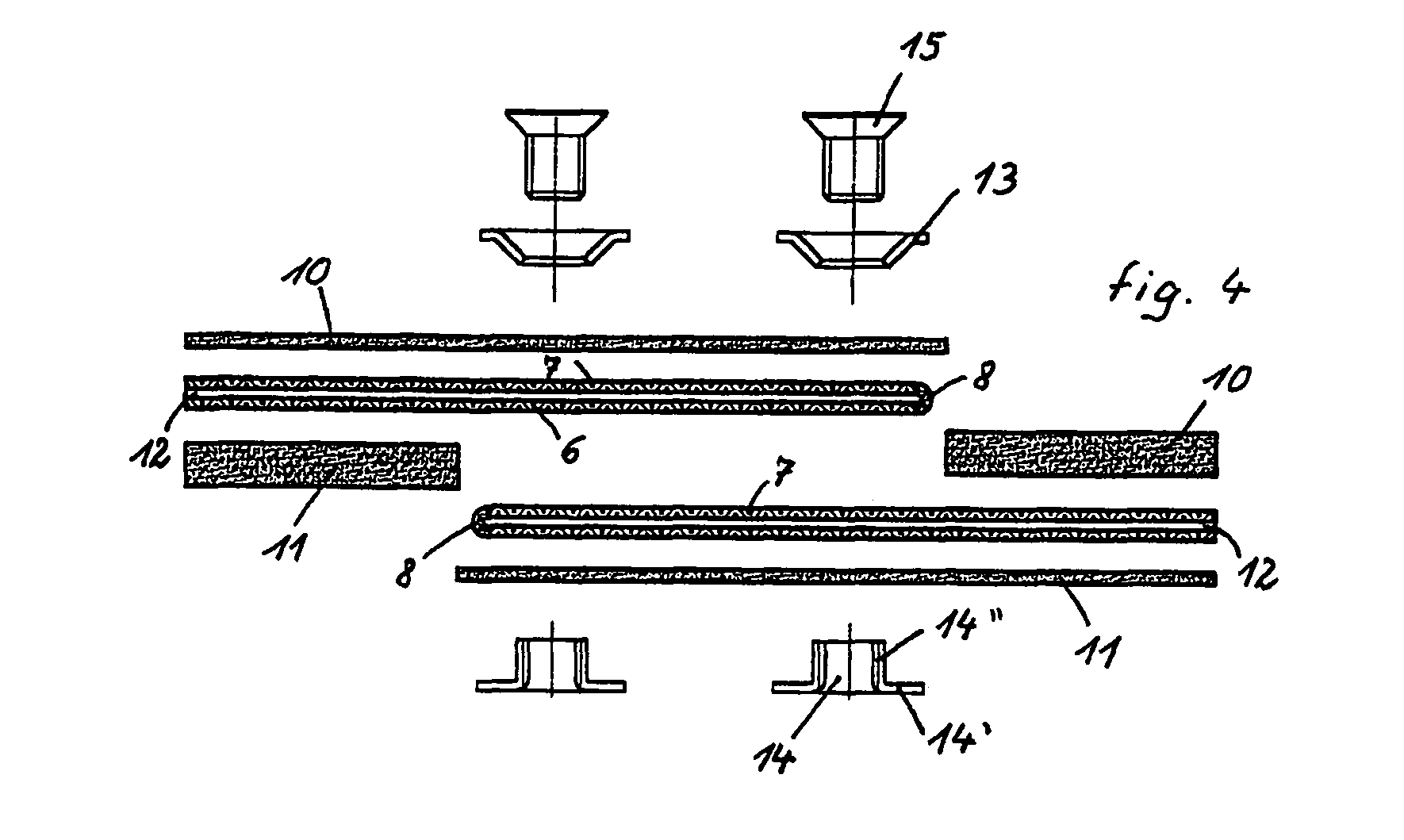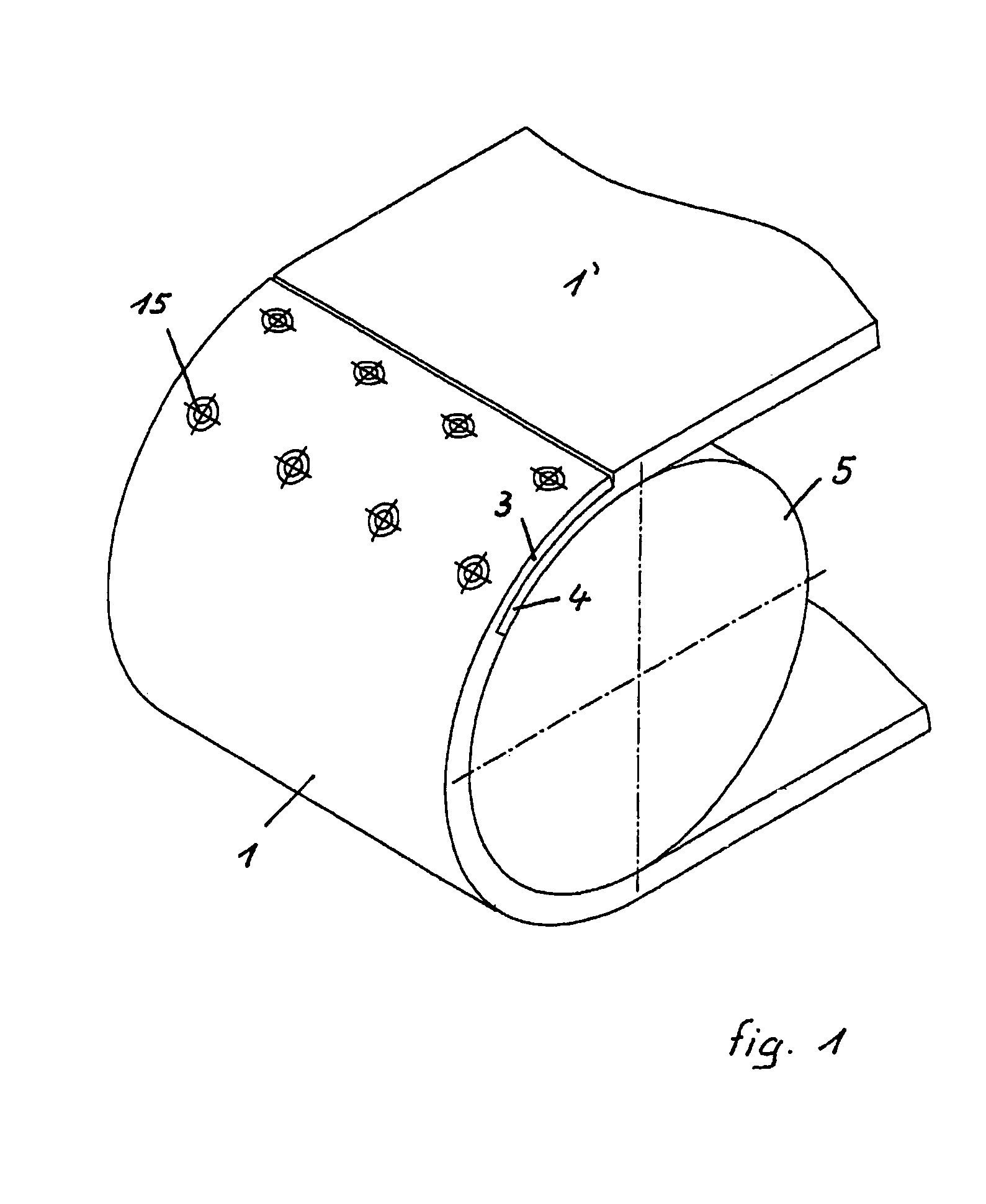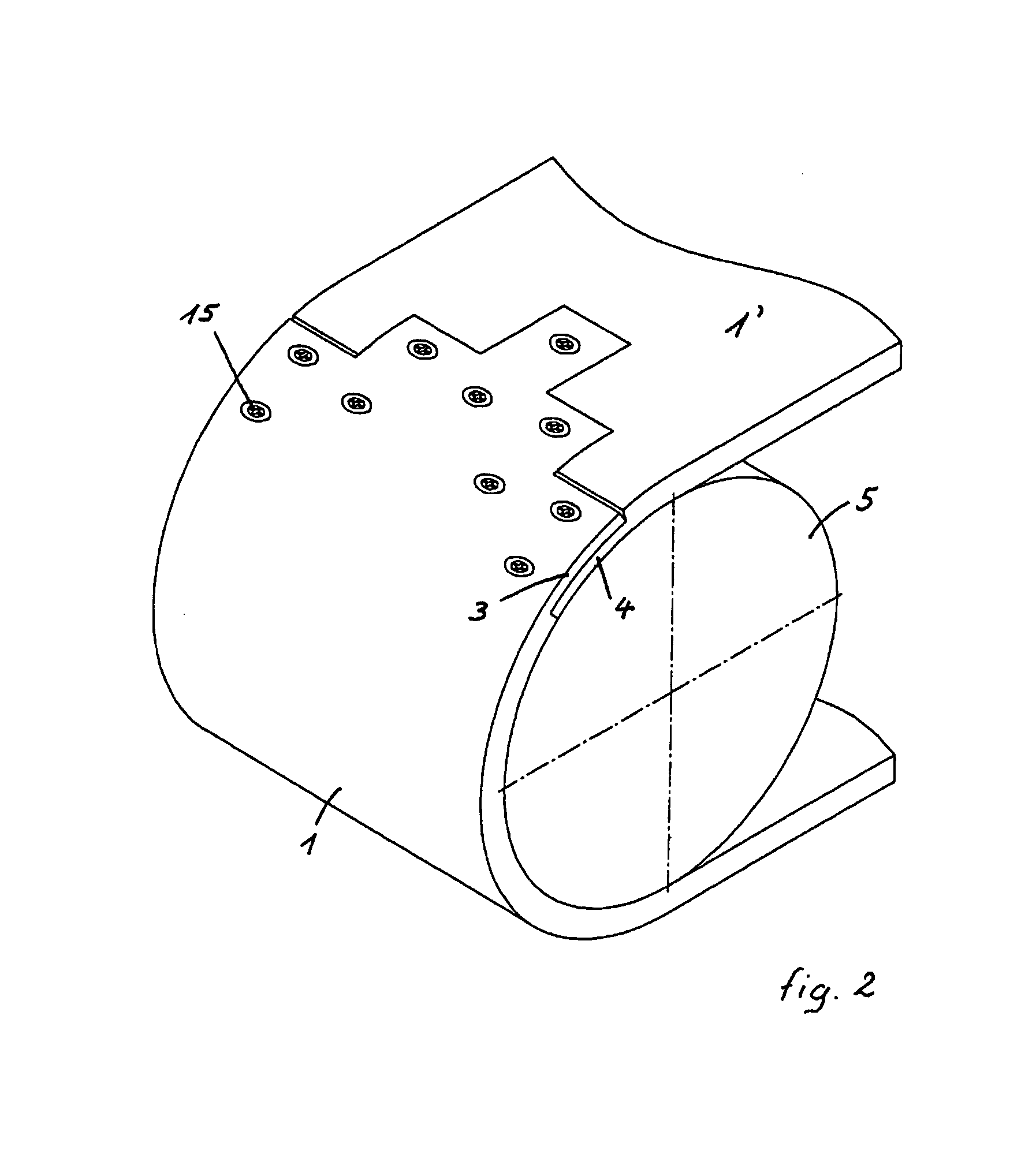Conveyor belt junction element
a technology of junction elements and conveyor belts, applied in the direction of belt fastenings, v-belt fastenings, ropes and cables for vehicles/pulleys, etc., can solve the problems of a great deal of care to be taken in regards to the preparation of ends, a great deal of rigour, and a large time-consuming and labor-intensive tim
- Summary
- Abstract
- Description
- Claims
- Application Information
AI Technical Summary
Benefits of technology
Problems solved by technology
Method used
Image
Examples
Embodiment Construction
[0044]In FIG. 1, a roller 5 is used for driving the ends 1, 1′ of the conveyor belt, notably comprising a male half-junction 3 and a female half-junction 4 assembled by means of screws 15. This junction only shows the general principle of the junctions according to the invention since, as already mentioned above, it has a front section of the male half-junction 3 which extends across the entire width and which can therefore catch easily with the scrapers.
[0045]FIG. 2 shows another more elaborate junction according to the invention, in the same position as the junction in FIG. 1. It is remarkable that the front edge of the male half-junction 3 has sections that are shifted in the longitudinal direction, which make it possible to prevent any possible catching of the scrapers over too considerable a section of the width at the same time.
[0046]FIG. 3 shows a perspective view of the folded sections of the core 7, which are folded over the cores 6 level with the longitudinally shifted fol...
PUM
 Login to View More
Login to View More Abstract
Description
Claims
Application Information
 Login to View More
Login to View More - R&D
- Intellectual Property
- Life Sciences
- Materials
- Tech Scout
- Unparalleled Data Quality
- Higher Quality Content
- 60% Fewer Hallucinations
Browse by: Latest US Patents, China's latest patents, Technical Efficacy Thesaurus, Application Domain, Technology Topic, Popular Technical Reports.
© 2025 PatSnap. All rights reserved.Legal|Privacy policy|Modern Slavery Act Transparency Statement|Sitemap|About US| Contact US: help@patsnap.com



